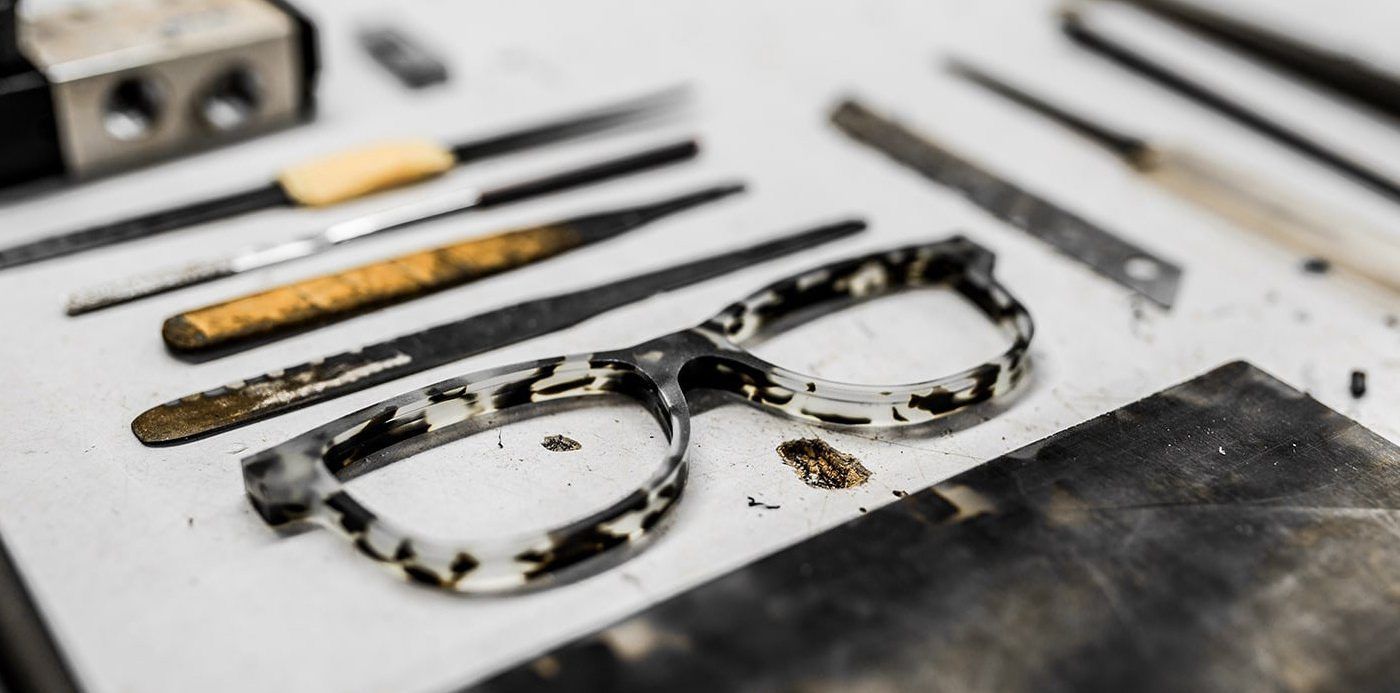The Ultimate FAQ Guide to Handcrafted Luxury Eyewear

Read time: 5 minutes
Luxury handcrafted eyewear holds a distinct allure for those who appreciate quality, craftsmanship, and unique designs. The world of artisan eyewear is rich and diverse, just waiting to be explored. As you venture into this exquisite universe, you may find yourself with a myriad of questions related to design, materials, fitting, and maintenance.
To assist you on your journey, we have compiled the ultimate FAQ guide to handcrafted luxury eyewear, providing answers to all your burning questions. This comprehensive resource covers a wide range of topics, from the intricate techniques used to create these captivating frames to tips for finding the perfect fit that complements your distinct style and preferences. Delve into the fascinating world of luxury eyewear with our expert advice in this easy-to-understand, informative guide. Your quest for a clearer understanding of artisan eyepieces starts here.
What sets handcrafted luxury eyewear apart from mass-produced options?
Handcrafted luxury eyewear differs significantly from mass-produced alternatives in terms of quality, craftsmanship, and exclusivity. Luxury eyepieces are often crafted by skilled artisans using time-honored techniques and premium materials, resulting in a finished product that showcases meticulous attention to detail and unparalleled durability. In contrast, mass-produced eyewear often sacrifices quality and craftsmanship for speed and cost efficiency. Choosing luxury eyewear ensures a captivating and enduring piece that echoes your refined taste and appreciation for expert craftsmanship.
What materials are used in the construction of luxury handcrafted eyewear?
A variety of high-quality materials are employed in the creation of luxury handcrafted eyewear. Some common materials include:
- Acetate: A plant-based plastic known for its durability, flexibility, and hypoallergenic properties. Acetate allows for a wide array of colors and patterns, making it a popular choice for eyewear designers.
- Titanium: A lightweight, strong, and hypoallergenic metal valued for its corrosion resistance and low weight. Titanium frames are often favored for their sleek appearance and exceptional durability.
- Wood: Wooden frames exude a warm, natural aesthetic while also demonstrating sustainable and eco-friendly qualities. A wide range of wood types can be used in handcrafted eyewear, such as bamboo, walnut, and zebrawood, each contributing to a unique appearance and feel.
- Buffalo horn: A luxurious, natural material known for its opulence and comfort, buffalo horn offers a distinctive, organic feel and is often used in high-end eyewear designs.
How do I ensure the perfect fit for my luxury handcrafted eyewear?
Achieving an ideal fit for your luxury eyewear is crucial for both comfort and style. Consider the following tips to find the perfect fit:
- Know your face shape: Understanding your face shape is essential for selecting frames that complement your features. Face shapes typically include oval, round, square, and heart-shaped, with specific frame designs better suited for each shape.
- Pay attention to frame size: Ensure that your chosen frames align with your facial proportions. Select frames with the appropriate width, taking into account your temple width, and aim for a snug fit that won't pinch, slide, or wobble.
- Consult an eyecare professional: For a personalized, expert assessment of your ideal eyewear fit, consult an optician who can provide recommendations and adjustments as needed.
How should I care for and maintain my luxury handcrafted eyeglasses?
Proper care and maintenance of your luxury eyewear are vital for preserving their appearance and longevity. Follow these guidelines to keep your frames in prime condition:
- Clean your lenses regularly with a lens cleaning solution and a microfiber cloth, avoiding abrasive materials that could scratch or damage the lenses.
- Store your eyeglasses in a protective case when not in use to minimize the risk of damage from knocks, scratches, or exposure to harsh elements.
- Periodically check and tighten any screws on your eyeglass frames to ensure that they remain secure and properly aligned.
- Avoid exposing your eyewear to extreme temperatures or direct sunlight for extended periods, which could warp or damage the materials over time.
- Take your luxury eyewear to an eyecare professional for routine checkups and adjustments, ensuring that they remain in optimal condition.
Can handcrafted luxury eyewear accommodate prescription lenses?
Yes, handcrafted luxury eyewear is fully compatible with prescription lenses. When selecting your frames, make sure to provide your prescription information to the eyewear boutique or optician, ensuring that your lenses are tailored to meet your specific vision-correcting requirements. Additionally, high-quality frames can often accommodate custom lens options such as progressive lenses, photochromic lenses, or anti-reflective coatings, further enhancing the functionality and aesthetic appeal of your handcrafted eyeglasses.
How can I identify authentic luxury handcrafted eyewear?
Determining the authenticity of luxury handcrafted eyewear involves examining several key aspects, such as materials, craftsmanship, and design. Genuine handcrafted eyepieces often feature premium materials that are both durable and visually striking, with intricate detailing and elements that reflect the care and skill of the artisan. Additionally, reputable luxury eyewear brands typically include a certificate of authenticity, detailing the artisanal processes used to create your eyepieces. It is also essential to purchase your handcrafted eyewear from trusted, reputable boutiques or online stores to ensure you are investing in a genuine piece of unparalleled quality and elegance.
Elevate Your Vision with Handcrafted Luxury Eyewear from Urban Optiks Optometry
Embarking on the journey through the world of handcrafted luxury eyewear offers a unique opportunity to appreciate the exceptional skill, artistry, and elegance centered around each carefully designed frame. With the knowledge gained from our comprehensive FAQ guide, you are now well-equipped to explore and appreciate the intricate craftsmanship that defines artisan eyewear.
Don't wait to elevate your style. Visit the Urban Optiks Optometry eyewear collection today and find the perfect handcrafted eyepiece that reflects your individuality and sophisticated taste. Experience firsthand the unparalleled quality and attention to detail that sets luxury eyewear apart from mass-produced alternatives. Embrace your refined style and invest in an elegant pair of handcrafted eyeglasses that will serve as a timeless treasure for years to come.
Related Topic:
Top 5 Tips for Choosing the Perfect Handmade Luxury Eyewear
Share this blog post on social or with a friend:
The information provided in this article is intended for general knowledge and educational purposes only and should not be construed as medical advice. It is strongly recommended to consult with an eye care professional for personalized recommendations and guidance regarding your individual needs and eye health concerns.
All of Urban Optiks Optometry's blog posts and articles contain information carefully curated from openly sourced materials available in the public domain. We strive to ensure the accuracy and relevance of the information provided. For a comprehensive understanding of our practices and to read our full disclosure statement, please click here.


















